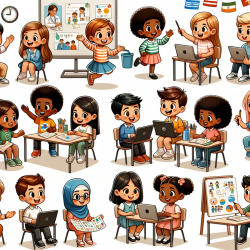In the realm of community psychology, the significance of involving children in participatory action research (PAR) is gaining traction. The research article "Imagining Participatory Action Research in Collaboration with Children: an Introduction" by Langhout and Thomas (2010) emphasizes the transformative potential of engaging children as active participants in research that affects their lives. This approach not only empowers children but also enhances the validity and effectiveness of research outcomes.
The Role of Children in Research
Traditionally, research concerning children's development and well-being has been conducted by adults, often without involving the children themselves. This has led to a limited understanding of children's perspectives and needs. The article highlights the importance of shifting this paradigm by involving children as co-researchers, allowing them to contribute their unique insights and experiences.
The concept of PAR with children aligns with community psychology values such as collaboration, diversity, and social justice. By involving children in defining problems and solutions, researchers can create more accurate and effective interventions that truly address the needs of young participants.
Benefits of Participatory Action Research with Children
- Empowerment: Involving children in research empowers them by recognizing their capacity to contribute meaningfully to discussions about issues that affect their lives.
- Cognitive Development: Engaging in research activities helps children develop critical thinking and problem-solving skills.
- Cultural Relevance: Children's participation ensures that interventions are culturally relevant and tailored to their specific contexts.
- Improved Outcomes: When children are involved in defining problems and solutions, the resulting interventions are more likely to be effective and sustainable.
Implementing Participatory Action Research in Practice
For practitioners looking to implement PAR with children, several key strategies can enhance the process:
- Create Safe Spaces: Ensure that children feel comfortable expressing their thoughts and ideas without fear of judgment or reprisal.
- Provide Training: Equip children with the necessary skills to participate effectively in research activities. This may include training in data collection methods or critical analysis.
- Cultivate Partnerships: Foster collaborative relationships between researchers, educators, parents, and children to ensure a holistic approach to problem-solving.
- Sustain Engagement: Maintain ongoing communication with child participants to ensure their continued involvement and commitment to the project.
The potential for participatory action research with children is vast. By embracing this approach, practitioners can not only improve educational outcomes but also foster a generation of empowered individuals who are equipped to advocate for themselves and others.
If you are interested in delving deeper into this topic, I encourage you to explore the original research paper: Imagining Participatory Action Research in Collaboration with Children: an Introduction.










